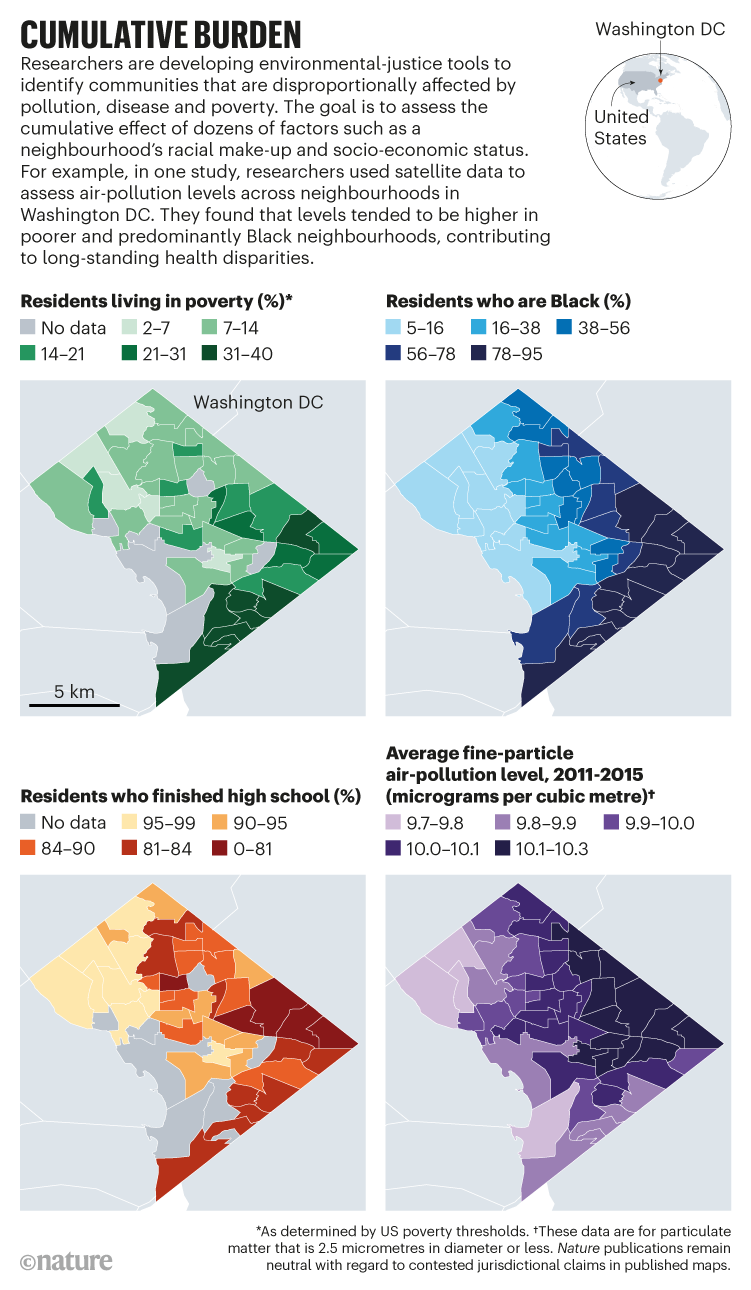Jeff Tollefson at Nature: “…The network of US monitoring stations that detect air pollution catches only broad trends across cities and regions, and isn’t equipped for assessing air quality at the level of streets and neighbourhoods. So environmental scientists are exploring ways to fill the gaps.
In one project funded by NASA, researchers are developing methods to assess street-level pollution using measurements of aerosols and other contaminants from space. When the team trained its tools on Washington DC, the scientists found1 that sections in the city’s southeast, which have a larger share of Black residents, are exposed to much higher levels of fine-soot pollution than wealthier — and whiter — areas in the northwest of the city, primarily because of the presence of major roads and bus depots in the southeast.

The detailed pollution data painted a more accurate picture of the burden on a community that also lacks access to high-quality medical facilities and has high rates of cardiovascular disorders and other diseases. The results help to explain a more than 15-year difference in life expectancy between predominantly white neighbourhoods and some predominantly Black ones.
The analysis underscores the need to consider pollution and socio-economic data in parallel, says Susan Anenberg, director of the Climate and Health Institute at the George Washington University in Washington DC and co-leader of the project. “We can actually get neighbourhood-scale observations from space, which is quite incredible,” she says, “but if you don’t have the demographic, economic and health data as well, you’re missing a very important piece of the puzzle.”
Other projects, including one from technology company Aclima, in San Francisco, California, are focusing on ubiquitous, low-cost sensors that measure air pollution at the street level. Over the past few years, Aclima has deployed a fleet of vehicles to collect street-level data on air pollutants such as soot and greenhouse gases across 101 municipalities in the San Francisco Bay area. Their data have shown that air-pollution levels can vary as much as 800% from one neighbourhood block to the next.
Working directly with disadvantaged communities and environmental regulators in California, as well as with other states and localities, the company provides pollution monitoring on a subscription basis. It also offers the use of its screening tool, which integrates a suite of socio-economic data and can be used to assess cumulative impacts…(More)”.
